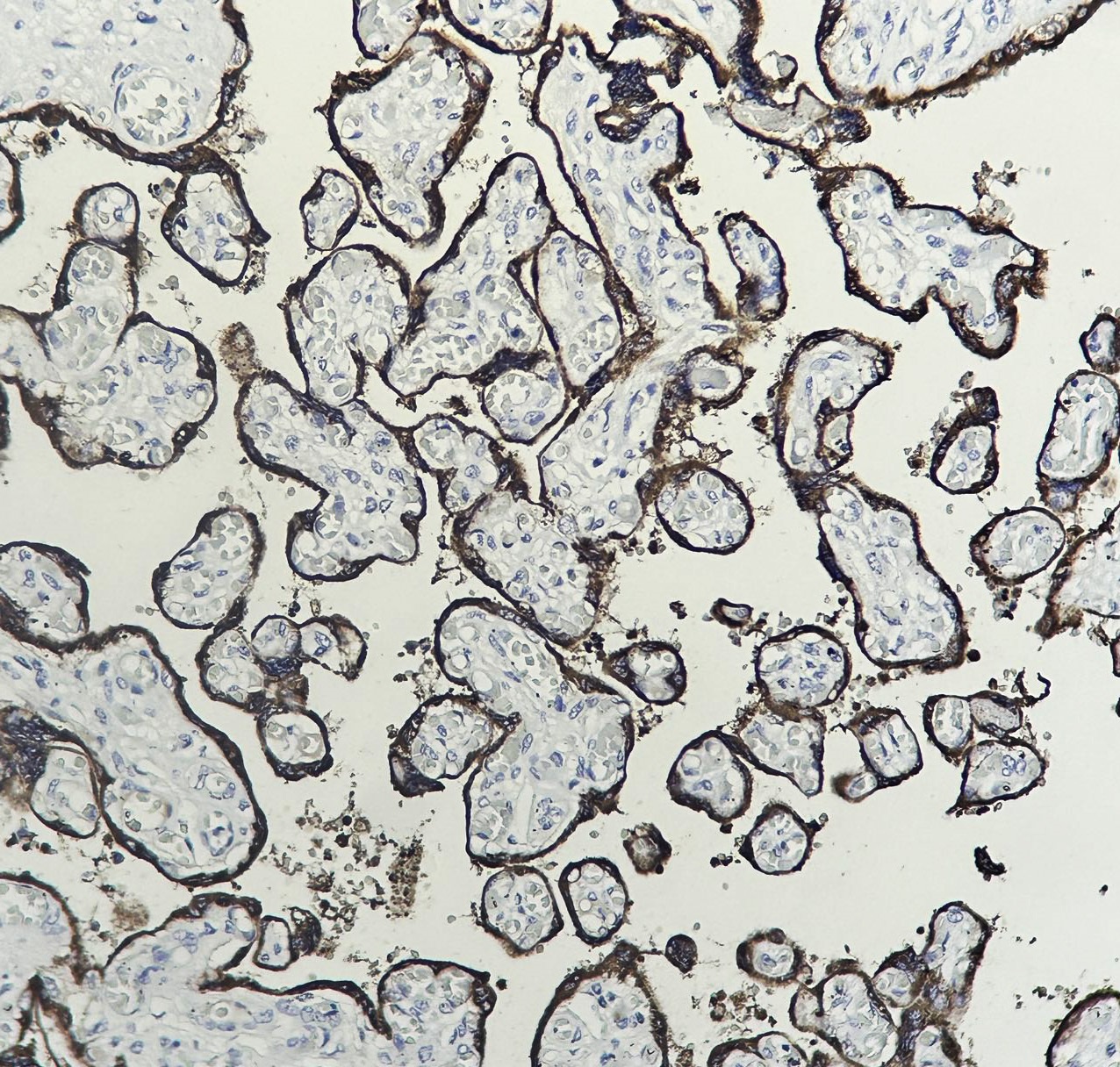hPL (ABT223) mouse mAb (Ready to Use)
- Catalog No.:YM6139R
- Applications:IHC
- Reactivity:Human;
- Target:
- Humanm Placental lactogen
- Fields:
- >>Cytokine-cytokine receptor interaction;>>Neuroactive ligand-receptor interaction;>>PI3K-Akt signaling pathway;>>JAK-STAT signaling pathway;>>Growth hormone synthesis, secretion and action
- Gene Name:
- CSH1/CSH2
- Protein Name:
- Chorionic somatomammotropin hormone 1/Chorionic somatomammotropin hormone 2
- Human Gene Id:
- 1442
- Human Swiss Prot No:
- P0DML2/P0DML3
- Immunogen:
- Synthesized peptide derived from humanSynthesized peptide derived from humanPlacental lactogen AA range:100-200
- Specificity:
- This antibody detects endogenous levels of hPL.
- Formulation:
- The prediluted ready-to-use antibody is diluted in phosphate buffer saline containing stabilizing protein and 0.05% Proclin 300
- Source:
- Mouse, Monoclonal/IgG2b, kappa
- Dilution:
- Ready to use for IHC
- Purification:
- The antibody was affinity-purified from ascites by affinity-chromatography using specific immunogen.
- Storage Stability:
- 2°C to 8°C/1 year
- Other Name:
- PL; CSB; CS-2; GHB1; hCS-B; CSA; CS-1; CSMT; GHB3; hCS-1; hCS-A
- Background:
- The protein encoded by this gene is a member of the somatotropin/prolactin family of hormones and plays an important role in growth control. The gene is located at the growth hormone locus on chromosome 17 along with four other related genes in the same transcriptional orientation; an arrangement which is thought to have evolved by a series of gene duplications. Although the five genes share a remarkably high degree of sequence identity, they are expressed selectively in different tissues. Alternative splicing generates additional isoforms of each of the five growth hormones, leading to further diversity and potential for specialization. This particular family member is expressed mainly in the placenta and utilizes multiple transcription initiation sites. Expression of the identical mature proteins for chorionic somatomammotropin hormones 1 and 2 is upregulated during development, although the ratio of 1 to 2 increases by term. Mutations in this gene result in placental lactogen deficiency and Silver-Russell syndrome. [provided by RefSeq, Jul 2008]
- Function:
- Produced only during pregnancy and is involved in stimulating lactation, fetal growth and metabolism. Does not interact with GHR but only activates PRLR through zinc-induced dimerization.
- Subcellular Location:
- Cytoplasmic
- Expression:
- placenta
- June 19-2018
- WESTERN IMMUNOBLOTTING PROTOCOL
- June 19-2018
- IMMUNOHISTOCHEMISTRY-PARAFFIN PROTOCOL
- June 19-2018
- IMMUNOFLUORESCENCE PROTOCOL
- September 08-2020
- FLOW-CYTOMEYRT-PROTOCOL
- May 20-2022
- Cell-Based ELISA│解您多样本WB检测之困扰
- July 13-2018
- CELL-BASED-ELISA-PROTOCOL-FOR-ACETYL-PROTEIN
- July 13-2018
- CELL-BASED-ELISA-PROTOCOL-FOR-PHOSPHO-PROTEIN
- July 13-2018
- Antibody-FAQs
- Products Images

- Human placenta tissue was stained with Anti-hPL (ABT223) Antibody



